T. Deliyannis, Yichuang Sun, J.K. Fidler9780849325731, 0849325730
Table of contents :
Continuous-Time Active Filter Design……Page 1
Preface……Page 5
Authors……Page 8
Contents……Page 9
Contents……Page 0
Continuous-Time Active Filter Design……Page 18
1.2.1 Lumped……Page 19
1.2.2 Linear……Page 20
1.2.6 Passive and Active……Page 21
1.3 Types of Filters……Page 22
1.4 Steps in Filter Design……Page 24
1.5.1 Nodal Analysis……Page 25
1.5.2.1 One-Port Network……Page 28
1.5.2.2 Two-Port Network……Page 29
1.5.3.1 Series–Series Connection……Page 32
1.5.3.2 Parallel–Parallel Connection……Page 33
1.5.3.5 Cascade Connection……Page 34
1.5.4 Network Transfer Functions……Page 35
1.6 Continuous-Time Filter Functions……Page 37
1.6.1 Pole-Zero Locations……Page 38
1.6.2 Frequency Response……Page 39
1.6.3.1 Impulse Response……Page 40
1.6.3.2 Step Response……Page 41
1.6.4 Step and Frequency Response……Page 42
1.7 Stability……Page 44
1.7.2 Absolute Stability and Potential Instability……Page 45
1.8.1 One-Ports……Page 47
1.8.2 Two-Ports……Page 48
1.8.4 Passivity and Stability……Page 49
1.9 Reciprocity……Page 50
References and Further Reading……Page 51
Continuous-Time Active Filter Design……Page 53
2.2.1 Causality……Page 54
2.2.3 Stability……Page 55
2.3 Formulation of the Approximation Problem……Page 56
2.4 Approximation of the Ideal Lowpass Filter……Page 57
2.4.1 Butterworth or Maximally Flat Approximation……Page 58
2.4.2 Chebyshev or Equiripple Approximation……Page 61
2.4.3 Inverse Chebyshev Approximation……Page 64
2.4.5 Elliptic Function or Cauer Approximation……Page 66
2.4.6 Selecting the Filter from Its Specifications……Page 68
2.5 Filters with Linear Phase: Delays……Page 71
2.5.1 Bessel-Thomson Delay Approximation……Page 73
2.5.2 Other Delay Functions……Page 77
2.6 Frequency Transformations……Page 78
2.6.1 Lowpass-to-Lowpass Transformation……Page 79
2.6.2 Lowpass-to-Highpass Transformation……Page 80
2.6.3 Lowpass-to-Bandpass Transformation……Page 81
2.6.4 Lowpass-to-Bandstop Transformation……Page 82
2.7 Design Tables for Passive LC Ladder Filters……Page 83
2.7.1.1 LC Filters……Page 84
2.7.1.2 Active RC Filters……Page 87
2.8 Impedance Scaling……Page 89
2.9 Predistortion……Page 90
2.10 Summary……Page 91
References……Page 92
Continuous-Time Active Filter Design……Page 94
3.2 Ideal Controlled Sources……Page 95
3.3 Impedance Transformation (Generalized Impedance Converters and Inverters) [1, 2]……Page 96
3.3.1.1 The Ideal Active Transformer……Page 98
3.3.1.3 The Positive Impedance Converter……Page 99
3.3.1.4 The Frequency-Dependent Negative Resistor [5]……Page 100
3.3.2.1 The Gyrator……Page 101
3.4 Negative Resistance……Page 102
3.5 Ideal Operational Amplifier……Page 104
3.5.1.1 Summation of Voltages……Page 105
3.5.1.2 Integration……Page 106
3.5.2.1 Realization of Controlled Sources……Page 107
3.5.2.2 Realization of Negative-Impedance Converters……Page 108
3.5.2.3 Gyrator Realizations……Page 110
3.5.2.4 GIC Circuit Using Opamps……Page 111
3.5.3.1 Open-Loop Voltage Gain of Practical Opamps……Page 113
3.5.3.2 Input and Output Impedances……Page 114
3.5.3.4 Input Offset Current IIO……Page 115
3.5.3.5 Input Voltage Range VI……Page 116
3.5.3.9 Maximum Peak-to-Peak Output Voltage Swing Vopp……Page 117
3.5.4 Effect of the Single-Pole Compensation on the Finite Voltage Gain Controlled Sources……Page 118
3.6.1 Voltage Amplification……Page 120
3.6.3 Voltage Summation……Page 121
3.6.5 Gyrator Realization……Page 122
3.6.6 Practical OTAs……Page 123
3.6.7 Current Conveyor [14]……Page 124
References……Page 126
Continuous-Time Active Filter Design……Page 127
4.2 Realization of First-Order Functions……Page 128
4.2.1 Lowpass Circuits……Page 129
4.2.2 Highpass Circuits……Page 130
4.3 The General Second-Order Filter Function……Page 131
4.4 Sensitivity of Second-Order Filters……Page 132
4.5 Realization of Biquadratic Functions Using SABs……Page 135
4.5.1 Classification of SABs……Page 136
4.5.2 A Lowpass SAB……Page 137
4.5.3 A Highpass SAB……Page 141
4.5.4 A Bandpass SAB……Page 142
4.5.5 Lowpass- and Highpass-Notch Biquads……Page 147
4.5.6 Lowpass Notch (R6 = •)……Page 148
4.5.8 An Allpass SAB……Page 150
4.6 Realization of a Quadratic with a Positive Real Zero……Page 153
4.7 Biquads Obtained Using the Twin-T RC Network……Page 155
4.8.1 Biquads by Inductance Simulation……Page 157
4.8.2 Two-Opamp Allpass Biquads……Page 159
4.8.3 Selectivity Enhancement……Page 160
4.9 Three-Opamp Biquads……Page 162
4.9.1 The Tow-Thomas [25–27] Three-Opamp Biquad……Page 165
4.9.2 Excess Phase and Its Compensation in Three-Opamp Biquads……Page 166
4.9.3 The Åkerberg-Mossberg Three-Opamp Biquad [29]……Page 167
4.10 Summary……Page 168
References……Page 169
Continuous-Time Active Filter Design……Page 171
5.2 Selection Criteria for High-Order Function Realizations……Page 172
5.3 Multiparameter Sensitivity……Page 174
5.4 High-Order Function Realization Methods……Page 175
5.5 Cascade Connection of Second-Order Sections……Page 176
5.5.1 Pole-Zero Pairing……Page 177
5.5.2 Cascade Sequence……Page 179
5.5.3 Gain Distribution [5]……Page 180
5.6 Multiple-Loop Feedback Filters……Page 183
5.6.1 The Shifted-Companion-Form (SCF) Design Method……Page 187
5.6.2 Follow-the-Leader Feedback Design (FLF)……Page 189
5.7.1 The BR Section……Page 192
5.7.2 Effect of h on and……Page 194
5.7.4 Realization of Biquartic Sections……Page 196
5.7.4.1 Design Example……Page 197
5.7.5 Sensitivity of CBR Filters……Page 199
References……Page 201
Further Reading……Page 202
Continuous-Time Active Filter Design……Page 203
6.1 Introduction……Page 204
6.3 Methods of LC Ladder Simulation……Page 205
6.4 The Gyrator……Page 206
6.4.1 Gyrator Imperfections……Page 207
6.4.2 Use of Gyrators in Filter Synthesis……Page 209
6.5.1 Use of GICs in Filter Synthesis……Page 211
6.6 FDNRs: Complex Impedance Scaling……Page 214
6.7 Functional Simulation……Page 216
6.7.1 Example……Page 219
6.7.2 Bandpass Filters……Page 220
6.7.3 Dynamic Range of LF Filters……Page 222
References……Page 223
Continuous-Time Active Filter Design……Page 225
7.2 Wave Active Filters……Page 226
7.3.1 Wave Active Equivalent of a Series-Arm Impedance……Page 229
7.3.3 WAEs for Equal Port Normalization Resistances……Page 230
7.3.4 Wave Active Equivalent of the Signal Source……Page 231
7.3.5 Wave Active Equivalent of the Terminating Resistance……Page 232
7.3.7 Interconnection Rules……Page 233
7.3.8 WAEs of Tuned Circuits……Page 235
7.3.10 Comments on the Wave Active Filter Approach……Page 237
7.4 Economical Wave Active Filters……Page 238
7.5 Sensitivity of WAFs……Page 241
7.6 Operation of WAFs at Higher Frequencies……Page 242
7.7 Complementary Transfer Functions [7]……Page 244
7.9 Linear Transformation Active Filters (LTA Filters)……Page 245
7.9.1 Interconnection Rule……Page 248
References……Page 250
Continuous-Time Active Filter Design……Page 252
8.1 Introduction……Page 253
8.2.1 First-Order Filter Structures……Page 254
First-Order Filters with One or Two Passive Components……Page 255
First-Order Filters with Three Passive Components……Page 256
8.2.2 Lowpass Second-Order Filter with Three Passive Components……Page 257
8.2.3 Lowpass Second-Order Filters with Four Passive Components……Page 258
8.2.4 Bandpass Second-Order Filters with Four Passive Components……Page 260
Lowpass Filter……Page 263
Bandpass Filter……Page 265
Other Considerations on Structure Generation……Page 266
Highpass Filter……Page 267
Bandpass Filters……Page 269
8.5.1 Direct Analysis Using Practical OTA Macro-Model……Page 271
8.5.3 Reduction and Elimination of Parasitic Effects……Page 275
8.6.1 Simulated OTA Resistors and OTA-C Filters……Page 276
8.6.2 Design Considerations of OTA-C Structures……Page 277
8.7 Second-Order Filters Derived from Five-Admittance Model……Page 280
8.7.1 Highpass Filter……Page 281
8.7.2 Bandpass Filter……Page 282
8.7.3 Lowpass Filter……Page 284
8.7.4 Comments and Comparison……Page 285
References……Page 286
Continuous-Time Active Filter Design……Page 290
9.1 Introduction……Page 291
9.2 OTA-C Building Blocks and First-Order OTA-C Filters [6, 12]……Page 292
9.3.2 Pole Equations……Page 294
9.3.6 Biquadratic Specifications……Page 295
9.4.1 DF OTA-C Circuit and Equations……Page 296
9.4.2 Filter Functions……Page 298
9.4.3 Design Examples……Page 299
9.4.4 DF OTA-C Realizations with Special Feedback Coefficients……Page 300
9.5 OTA-C Filters Based on Summed-Feedback (SF) Configuration……Page 302
9.5.1 SF OTA-C Realization with Arbitrary k 12 and k 11……Page 303
9.5.2 SF OTA-C Realization with k 12 = k 11 = k……Page 304
9.6 Biquadratic OTA-C Filters Using Lossy Integrators……Page 305
9.6.2 Feedback Lossy Integrator Biquad……Page 306
9.7.1 Multifunctionality and Number of OTA……Page 307
9.7.3 Tunability……Page 308
9.8 Versatile Filter Functions Based on Node Current Injection……Page 309
9.8.1 DF Structures with Node Current Injection……Page 310
9.8.2 SF Structures with Node Current Injection……Page 311
9.9 Universal Biquads Using Output Summation Approach……Page 313
9.9.2 SF Type Universal Biquads……Page 314
9.9.3 Universal Biquads Based on Node Current Injection and Output Summation……Page 315
9.10 Universal Biquads Based on Canonical and TT Circuits……Page 316
9.11.1 General Model and Equations……Page 317
9.11.2 Finite Impedance Effects and Compensation……Page 320
9.11.3 Finite Bandwidth Effects and Compensation……Page 321
9.11.4 Selection of OTA-C Filter Structures……Page 323
9.11.6 Dynamic Range Problem……Page 324
9.12 Summary……Page 325
References……Page 326
Continuous-Time Active Filter Design……Page 330
10.1 Introduction……Page 331
OTA-C Inductors……Page 332
Tolerance Sensitivity of Filter Function……Page 333
Parasitic Effects on Simulated Inductor……Page 334
Parasitic Effects on Filter Function……Page 335
OTA-C Biquad Derived from RLC Resonator Circuit……Page 337
A Lowpass OTA-C Filter……Page 338
10.2.3 Bruton Transformation and FDNR Simulation……Page 339
10.3.1 General Description of the Method……Page 342
10.3.2 Application Examples and Comparison……Page 343
10.3.3 Partial Floating Admittance Concept……Page 346
10.4.1 Leapfrog Simulation Structures of General Ladder……Page 347
10.4.2 OTA-C Lowpass LF Filters……Page 350
Example……Page 352
10.4.4 Partial Floating Admittance Block Diagram and OTA-C Realization……Page 354
10.4.5 Alternative Leapfrog Structures and OTA-C Realizations……Page 356
10.5 Equivalence of Admittance and Signal Simulation Methods……Page 358
10.6 OTA-C Simulation of LC Ladders Using Matrix Methods……Page 360
10.7 Coupled Biquad OTA Structures……Page 362
10.8.1 Selection of Capacitors and OTAs……Page 364
10.9 Summary……Page 365
References……Page 366
Continuous-Time Active Filter Design……Page 370
11.1 Introduction……Page 371
11.2.2 System Equations and Transfer Function……Page 372
11.2.3 Feedback Coefficient Matrix and Systematic Structure Generation……Page 375
11.2.4 Filter Synthesis Procedure Based on Coefficient Matching……Page 376
11.3.1 First- and Second-Order Filters……Page 377
11.3.2 Third-Order Filters……Page 378
11.3.3 Fourth-Order Filters……Page 379
11.3.4 Design Examples of Fourth-Order Filters……Page 381
11.3.5.1 General IFLF Configuration……Page 382
11.3.5.2 General LF Configuration……Page 383
11.3.6 Other Types of Realization……Page 384
11.4 Generation and Synthesis of Transmission Zeros……Page 385
11.4.2 Input Distribution of OTA Network [12]……Page 386
11.4.3 Universal and Special Third-Order OTA-C Filters [13]……Page 388
11.4.3.3 LF and Output Summation Structure in Fig. 11.10(c)……Page 389
11.4.3.6 Design of Elliptic Filters……Page 390
11.4.4.1 Universal IFLF Architectures [8, 10]……Page 392
11.4.4.2 Universal LF Architectures……Page 394
11.5.1 General Sensitivity Relations……Page 395
11.5.2 Sensitivities of Different Filter Structures……Page 397
11.6 Determination of Maximum Signal Magnitude……Page 399
11.7 Effects of OTA Frequency Response Nonidealities [10]……Page 401
11.8 Summary……Page 403
References……Page 404
Continuous-Time Active Filter Design……Page 408
12.1 Introduction……Page 409
12.2.1 General Model and Filter Architecture Generation……Page 410
12.2.1.1 First-Order Filter Structures……Page 411
12.2.2 Passive Resistor and Active Resistor……Page 412
12.2.3 Design of Second-Order Filters……Page 413
12.2.4 Effects of DO-OTA Nonidealities……Page 416
12.3.1 Basic Building Blocks and First-Order Filters [15]……Page 418
12.3.2 Current-Mode DO-OTA-C Configurations with Arbitrary k ij [15]……Page 419
12.3.3 Current-Mode DO-OTA-C Biquadratic Architectures with k 12 = k jj……Page 420
12.3.4 Current-Mode DO-OTA-C Biquadratic Architectures with k 12 = 1[15]……Page 421
12.3.6 Universal Current-Mode DO-OTA-C Filters……Page 423
12.4.1 Leapfrog Simulation Structures of General Ladder……Page 427
12.4.2 Current-Mode DO-OTA-C Lowpass LF Filters……Page 429
12.4.3 Current-Mode DO-OTA-C Bandpass LF Filter Design……Page 431
12.4.4 Alternative Current-Mode Leapfrog DO-OTA-C Structure……Page 432
12.5.1 Design of All-Pole Filters [23]……Page 433
12.5.2.1 Multiple Loop Feedback with Input Distribution The multiple current-integrator loop current-feedback model……Page 437
12.5.2.2 Multiple Loop Feedback with Output Summation……Page 438
12.5.2.3 Filter Structures and Design Formulas……Page 439
12.6.1 Balanced Opamp-RC and OTA-C Structures……Page 441
12.6.2 MOSFET-C Filters……Page 442
12.6.3 OTA-C-Opamp Filter Design……Page 444
12.6.4 Active Filters Using Current Conveyors……Page 445
12.7 Summary……Page 447
References……Page 448
Continuous-Time Active Filter Design……Page 452
Appendix A: A Sample of Filter Functions……Page 453
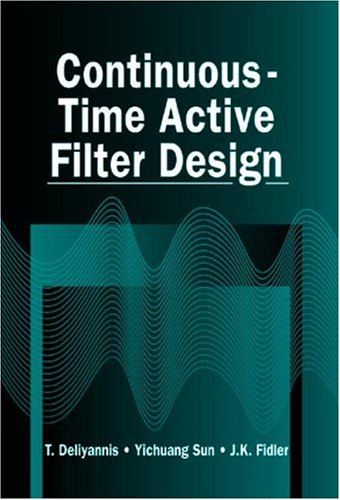
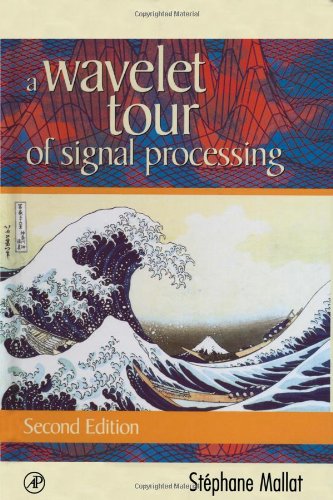

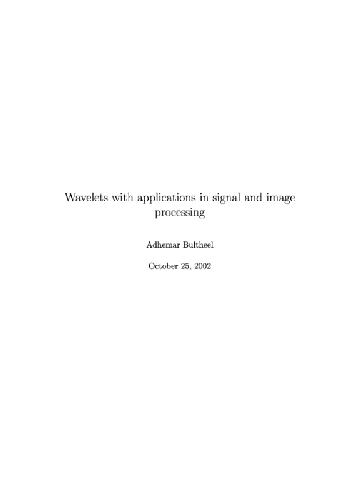
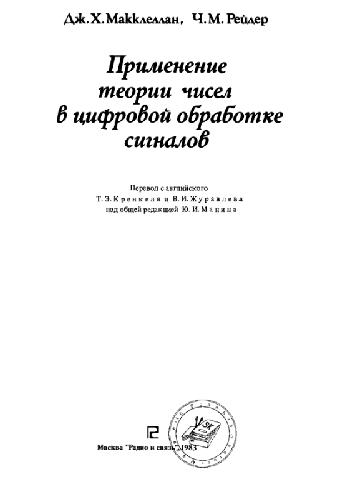

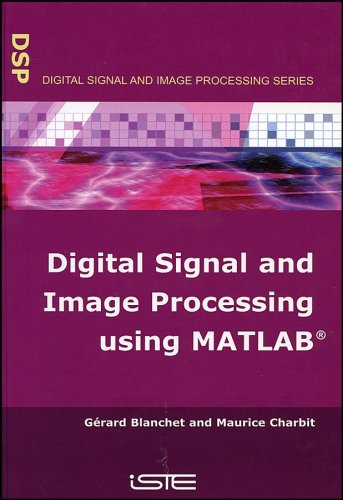
Reviews
There are no reviews yet.